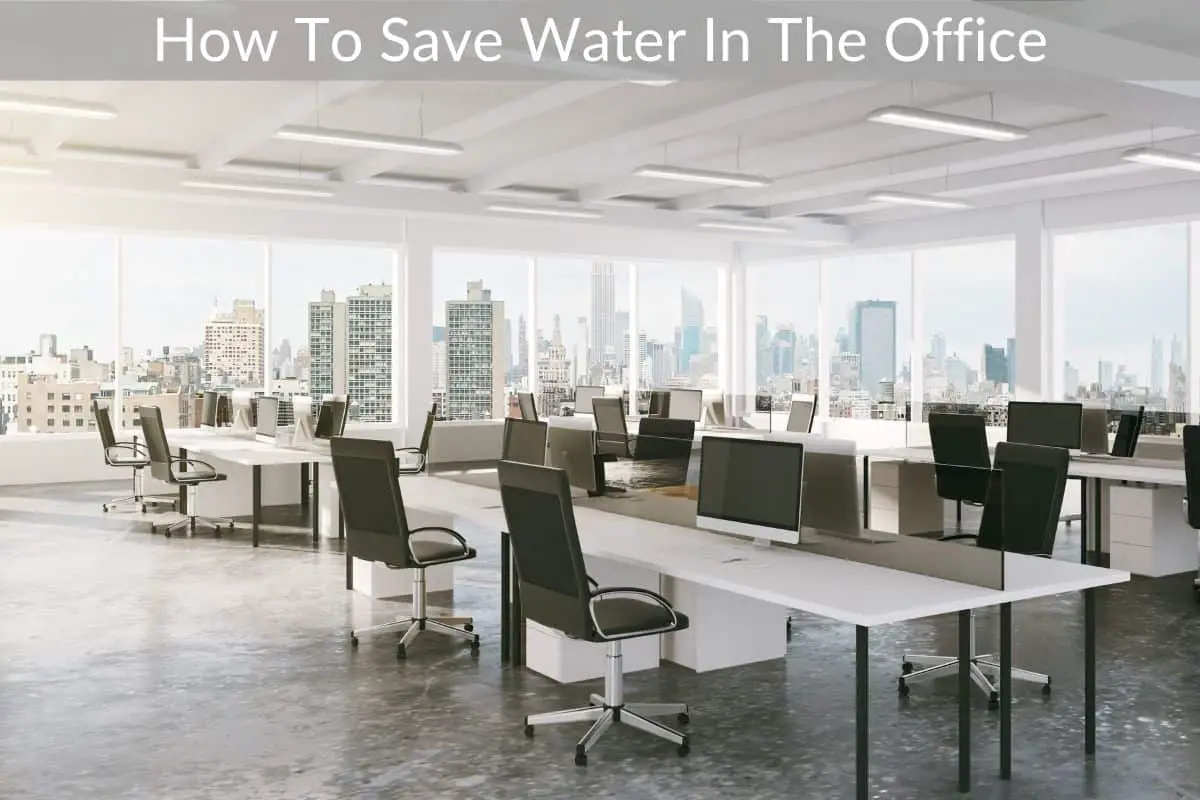Table of Contents
*This post may contain affiliate links. As an Amazon Associate we earn from qualifying purchases.
Modern businesses and offices either in the manufacturing or service industry have different water needs. The need to conserve water is imminent regardless of the size or type of the industry. Research has it that cutting back on water use in the office can help save water by up to 30%. Saving water will not only reduce your production cost but will also reduce your company’s carbon footprint. If you want to generate some good environmental and sustainability PR, then consider the techniques on how to save water in the office discussed in this article.
1. Install Water-efficient Taps in your Bathrooms and Kitchen
A lot of water in the office is used mainly in the bathrooms and kitchens. Therefore, you need to consider water efficient equipment such as automatic spray taps. Installing taps with restrictors is an important aspect on how to save water in the office. Consequently, lever or mixer taps are good water savers. They ensure that water reaches the desired temperature quickly and efficiently. Therefore, you will not have to keep the water running for long as you wait for it to heat up.
2. Talk to your Employees About your Water Savings Initiatives
During the induction procedures, you can include water conservation policies to new employees. You can also hold forums where you seek the staff’s opinion on how to save water in the office. Besides that, take advantage of team meetings as a platform to discuss water efficiency. You can enforce this by requesting timely reports on water use expenses. This strategy will also help you track whether the initiatives you have discussed with your staff on water savings are working. As a group, you can set realistic water goals for a particular month or week.
3. Provide Incentives to Staff Members to Encourage Sustainable Water Use
You can set a particular prize for the employee ‘water champion’ of the month or week. For instance, you can reward those who come up with the best water saving ideas. Appointing one staff member to be in charge of water meters and water use is a good way of tracking your water consumption. To make it better, you can assign tenure to each office member on a monthly or weekly basis. After a period, find out who had the largest water savings. Reward the responsible member of staff. This is a participatory approach on how to save water in the office. It guarantees remarkable results by the end of the year.
4. Regulate Water use in Office Showers
Showers are another hotspot for water wastage in the office. Encourage staff members to limit their shower duration to four minutes or less. In addition to that, consider replacing the contemporary showerheads with water-efficient ones. The latter have been found to save up to forty percent of the normal water usage. Also, keep an eye on any leaking showers and fix them immediately.
5. Regulate and Monitor the Operation of Evaporative Air Conditioners
Air conditioners such as evaporative type humidifiers are another source of water loss in the office. Set the thermostats of these devices to 24 degrees Celsius. Use fans and natural ventilation where possible. Also, make sure to switch off water dependent heating or cooling conditioners after-hours.
Cooling towers also lose a lot of water through evaporation, drift, and blowdown. They can make up the greatest percentage of your office water usage when not maintained. You should, therefore, ensure that they are operating efficiently and are not a liability.
6. Put up Signs Regarding the Best Water Saving Practices in Water Points
Signage and notices on the bathroom walls urging staff members to conserve water can go a long way in mitigating water wastage in offices. This approach can provide staff members the best strategies on how to save water in the office. For instance, you can use signs or posters to remind employees to turn off the water while lathering or scrubbing their hands. Only turn it back on to rinse their hands. Based on the statistics from the San Francisco Public Utilities Commission, this initiative saves up to two gallons of water every two minutes.
7. Sweep Dry Litter Where Appropriate
Avoid using water to clean dirt that can be cleaned with brooms or dry mops. For example, using pressurized water to clean office sidewalks can lead to water wastage in the long run. You can use hard brooms instead to sweep off the dry litter. You can also sweep or dry mop smooth office floors. Cut back on the average amount of water used for washing the whole premise. This is a simple yet workable tip on how to save water in the office.
8. Collect Dishes Before Putting Them in The Dishwasher
Offices can have many staff members hence an increased number of utensils used in a day. When each employee washes a single cup under a running tap, a lot of water gets wasted at the end of the day. Have a communal dishwasher in the kitchen where all the staff members collect the utensils they use.
At the end of the day, they can wash these dishes and cups at once to reduce the amount of waste water. If your office has a large staff, you can increase the washing to twice or thrice every working day. In this way, you can maintain the appropriate hygiene standards.
You might also like – How to Save on Home Heating
9. Install Low-Flow Toilets
The Environmental Protection Agency states that the largest amount of water use in offices takes places in the washrooms. The contemporary inefficient toilets utilize over six gallons of water in every flush. If you still have those, replace them with low-flow toilets that use only 1.28 gallons of water or less in every flash. Big offices with many restrooms will receive more savings on each water-efficient toilet installed.
Consequently, you should replace the single-flush toilets with dual flush type. The latter uses half the amount used by the single flush toilets.
10. Perform Regular Maintenance and Assessment of Infrastructure
Office water suppliers usually offer water audits showing the efficiency of water use in enterprises. You can request a personalized water management plan. In this way, you can come up with viable strategies on how to save water in the office. In addition to that, insulate your water pipes against cold weather particularly during winter. A burst in the pipe due to frost can cause leakage relaying water to your office.
Make sure you know the exact location of meters and shut-off valves in the main water line to your office. This will allow you to detect any leakages in the system that could undermine water efficiency.
These are some of the fundamental ways on how to save water in the office or workplace. Some of them such as the installation of low-flow toilets and aerators in faucets may be expensive considering the high initial costs. However, depending on your office size, the costs can be recovered in less than a year just from water savings. A good part of water efficiency and conservation in an office is linked directly to the water behavior of your employees. Therefore, involve them in any activities regarding water sustainability in your premise.
If you have any ideas, thoughts or comments on the best techniques on how to save water in the office, post them in the comments section.

